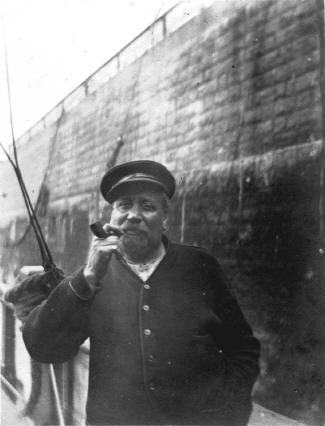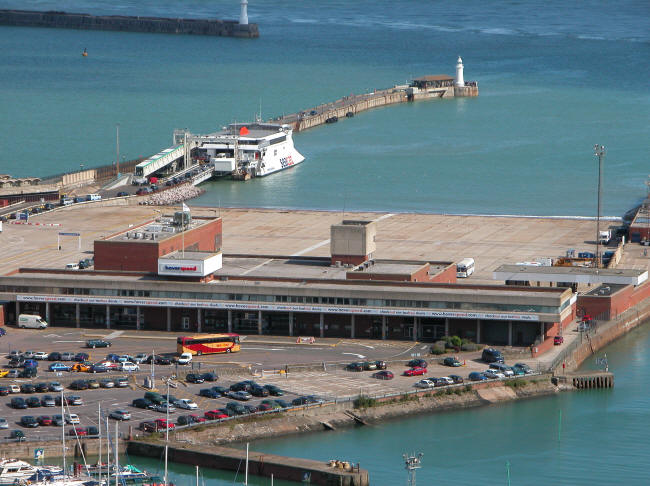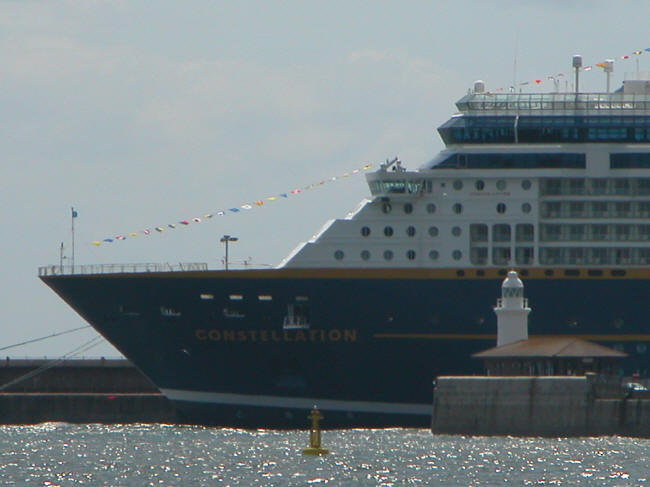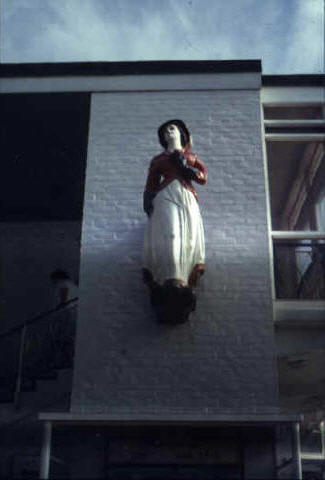| Maritime Index |
The Prince of Wales' Pier - Then and Now |
|
|
||
|
|
The Prince of Wales Pier was completed in 1902 and was, for about half it's length, a traditional open ironwork pier. The stone section at the end, with it's lighthouse, was used for berthing large liners such as the Amerika, a 22,205 ton vessel of the Norddeutscher Lloyd line. The liner trade did not survive long due to the difficulties of manoeuvring the large vessels in the close confines of the harbour, especially in high winds, which led to a number of vessels being damaged. In later years, the Harbour Board tugs, Lady Brassey and Lady Duncannon were berthed alongside on the western side of the pier. The figurehead in the picture (left) was on the outside of the Lighthouse Cafe, built around the stem of the lighthouse with a gallery overlooking the harbour entrance and the Admiralty Pier. This was a favourite spot for residents and visitors alike to sit and watch the ships and small vessels going in and out of the port. |
|
| Promenade Pier |
The Prince of Wales Pier was the second iron pier to be built at Dover, the 900-foot long Promenade Pier, one of the most attractive seaside piers in Kent, having been built here in 1883 from the centre of the promenade. Like most Victorian seaside piers, it had two ornate kiosks at the entrance and shelters on either side at two points along it's length. Unfortunately it was closed fairly soon after being completed due to storms and collision damage, there being no Admiralty Harbour to protect it from the worst of the weather at that time. It was reopened after repairs in 1895 and a concert pavilion was added to the end in 1899, but it suffered further damage after commencement of the Admiralty Harbour construction in the early 1900s. By the end of the First World War the Promenade Pier was becoming dilapidated and it was finally demolished in 1927 after a life of only 44 years. |
|
|
The picture (right) shows Captain William George Sharp snr. on the deck of his tug, probably some time in the 1930s, moored alongside the pier. More pictures of the DHB tugs can be found here. |
 |
|
| International Hoverport |
 |
|
|
In 1978, a large part of the commercial harbour was filled in to form a new international hoverport, at which time the iron pier was encased in concrete. The picture above shows the hoverport on 30th August 2003 at 3.15pm, seen from the top of Military Road on the Western Heights. The Seaspeed hovercraft service had ceased and the service replaced by high-speed catamaran ferries, one of which can be seen loading from a ramp built onto the side of the pier. The original hovercraft landing pad was used as a marshalling area for vehicles waiting to board. |
||
 |
||
|
This picture shows the pier dwarfed by the cruise liner moored at the terminal on the Admiralty Pier - the main deck of the liner Constellation is roughly level with the top of the lighthouse. |
||
 |
||
|
This view shows the present cafe at the end of the pier - not a patch on the original in terms of size, comfort, views or the quality of the food! |
||
